Imagine walking into your home and seeing a beautiful table or shelf that you crafted with your own hands. The movement toward building your own furniture is booming in 2025, as more people seek personalized, sustainable solutions for their homes.
Why the surge in interest? Building your own furniture is within reach for beginners and seasoned DIYers alike. It offers a cost-effective way to express creativity while reducing waste.
There is a unique sense of pride and fulfillment that comes from making custom pieces. In fact, a recent Home Improvement Trends Report found a 30% rise in DIY home projects during 2024.
Ready to join this growing community? This essential guide will walk you through every step of building your own furniture, covering planning, materials, tools, expert techniques, and troubleshooting, so you can turn your vision into reality.
Planning Your Furniture Project
Transforming a vision into reality starts with solid planning. When it comes to building your own furniture, careful preparation lays the foundation for a successful and satisfying project. This section guides you through every critical decision, from measuring your space to budgeting and design, ensuring your DIY journey is smooth from start to finish.
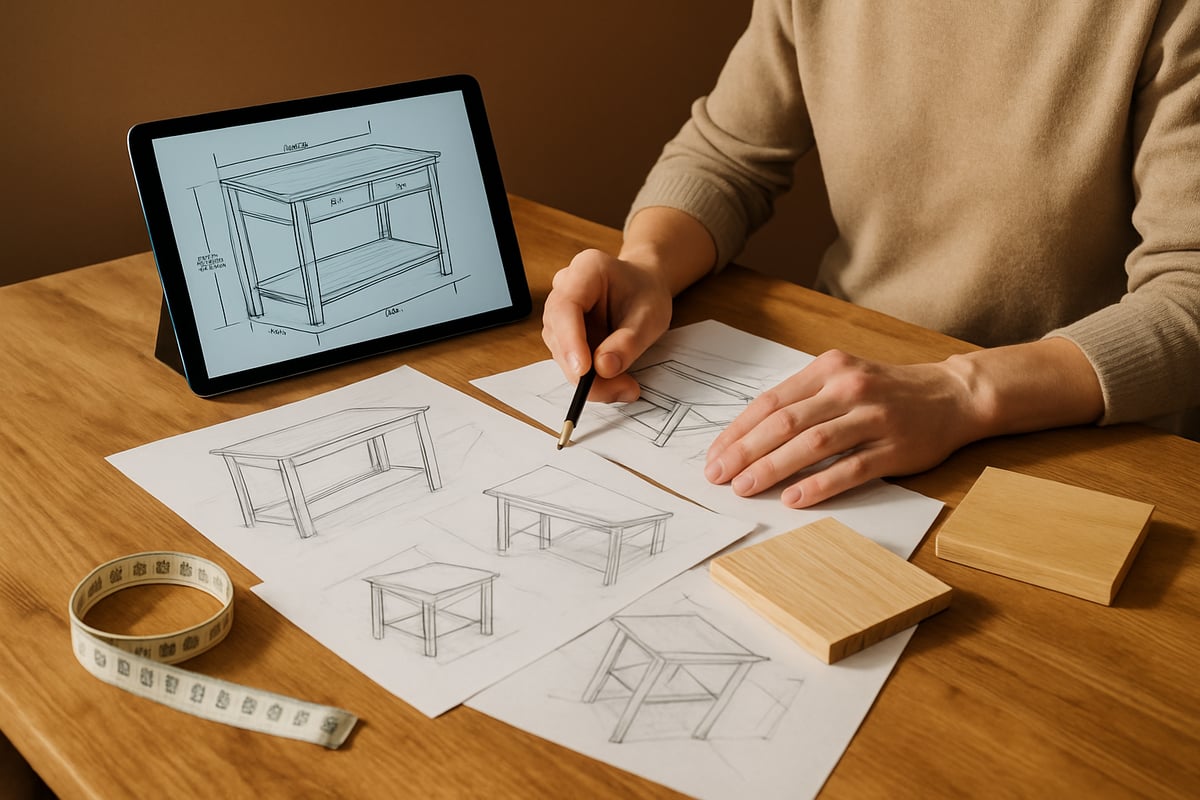
Understanding Your Needs and Space
Before picking up any tools, assess your living environment and functional needs. Consider the dimensions of your room, existing décor, and how the new piece will serve your lifestyle. Accurate measurements are essential. Use a tape measure to document height, width, and depth, accounting for doors, windows, and walkways.
A common pitfall in building your own furniture is underestimating space requirements. For instance, custom shelving can maximize storage in a compact apartment, but only if sized precisely. According to the DIY Survey 2023, 68 percent of DIYers regret poor planning, so double-check your numbers and sketch a basic layout. This groundwork ensures your project fits seamlessly into your home.
Choosing the Right Furniture Piece to Build
Selecting the right project is crucial for building your own furniture, especially if you are new to the craft. Start by considering your skill level, available time, and budget. Simple projects like coffee tables, bookshelves, or benches are ideal for beginners and build confidence quickly.
Here is a quick comparison table for popular starter projects:
| Project | Skill Level | Avg. Time | Budget |
|---|---|---|---|
| Coffee Table | Beginner | 1 day | $80–$200 |
| Bookshelf | Beginner | 2 days | $100–$250 |
| Bench | Beginner | 1 day | $60–$180 |
A first-time builder shared how constructing a side table introduced them to basic joinery and finishing, setting the stage for more complex projects. Choose a piece that excites you and matches your current abilities.
Designing Your Furniture: Inspiration and Sketching
Inspiration is everywhere when building your own furniture. Browse social media, design blogs, and furniture catalogs to spark ideas. Save images and note features that appeal to you, such as minimalist lines or bold colors.
Begin sketching your concepts. Some prefer hand-drawn sketches, which allow for quick adjustments and creativity. Others use digital tools for precision. Free online design software is a great entry point for beginners, letting you visualize proportions and experiment with styles before committing to a plan. Sketching refines your vision and prevents costly mistakes later.
Creating or Sourcing Plans and Blueprints
Detailed plans are the backbone of building your own furniture, ensuring safety and success. Blueprints specify dimensions, materials, and assembly steps, making the project manageable and reducing surprises.
You can find reliable blueprints in open-source repositories and design communities. For those seeking a wide variety of ready-to-use plans, explore Downloadable furniture blueprints, which provide clear instructions and adaptability for different skill levels. If you want to customize, adapt existing plans to your unique requirements. Investing time in thorough planning sets you up for a smoother build.
Budgeting and Timeline Planning
A realistic budget and timeline are essential when building your own furniture. Start by listing all anticipated expenses, including materials, hardware, tools, and finishes. Allocate extra funds for unexpected costs, such as replacement parts or upgrades.
Here is a sample budget breakdown:
| Item | Estimated Cost |
|---|---|
| Materials | $60–$200 |
| Hardware | $30–$80 |
| Tools | $40–$100 |
| Finishes | $20–$40 |
Plan your time as well. Divide the project into phases: design, sourcing, cutting, assembly, and finishing. According to the Home DIY Cost Study 2024, the average DIY furniture project costs between $150 and $400. Careful scheduling ensures steady progress and helps you balance the project with daily life.
Essential Materials and Tools for 2025
Choosing the right materials and tools is the foundation of building your own furniture. In 2025, the range of options is broader, more sustainable, and more accessible than ever. Whether you are a first-time DIYer or a seasoned maker, understanding what to use is crucial for both quality results and a rewarding experience.
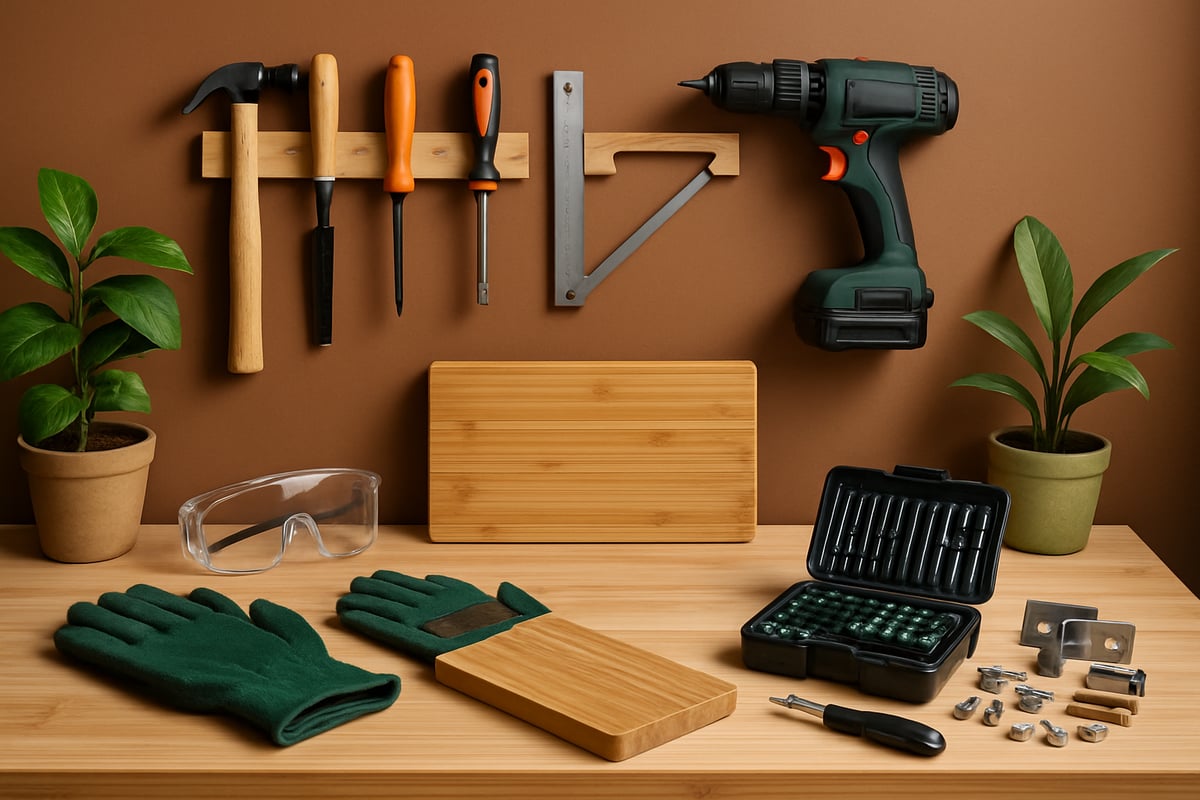
Selecting the Right Materials
When building your own furniture, material choice directly impacts durability, cost, and environmental footprint. Solid wood offers strength and classic appeal, while plywood provides stability for larger surfaces. MDF is budget-friendly and smooth but less robust for heavy loads.
| Material | Pros | Cons |
|---|---|---|
| Solid Wood | Strong, long-lasting | Expensive, heavier |
| Plywood | Stable, affordable | Edges need covering |
| MDF | Smooth, cost-effective | Weaker, not water-resistant |
Eco-friendly options are gaining popularity. Bamboo, for example, is fast-growing, durable, and perfect for sustainable projects. Many DIYers now use reclaimed wood for character and reduced waste. Planning your project with Furniture CAD design resources can help you visualize materials and avoid costly mistakes.
Hardware and Fasteners
Hardware is the backbone of building your own furniture, ensuring pieces stay together and function well. Common fasteners include screws, nails, and brackets. Specialty connectors, like cam locks and pocket hole joinery, make assembly easier for beginners.
Durability depends on selecting the right hardware for each material. Stainless steel screws resist rust, while brass or black finishes offer a modern look. Minimalist and invisible joinery trends are shaping the 2025 market, creating cleaner lines and stronger joints without visible hardware.
Organize your hardware by type and size in labeled containers to streamline your build and minimize errors. Double-check that fasteners match your chosen materials.
Must-Have Tools for Beginners and Beyond
Starting with the basics is key when building your own furniture. Essential hand tools include saws, hammers, screwdrivers, and measuring tapes. For added efficiency, consider investing in power tools such as drills, sanders, and jigsaws.
A multi-tool kit is a space-saving solution for small workshops or apartments. These kits combine several functions, making them ideal for a variety of tasks without clutter. As your skills grow, you might add specialized tools like a router or biscuit joiner for advanced joinery methods.
Keep your tools well-maintained and always return them to their designated spots. This habit saves time and reduces frustration during each step of your furniture project.
Safety Equipment and Best Practices
Safety is non-negotiable in building your own furniture. Equip yourself with goggles, gloves, and dust masks to protect against flying debris and harmful particles. Well-ventilated, well-lit spaces are essential for safe and efficient work.
Set up your workshop with clear walkways and organized storage. This reduces tripping hazards and keeps tools within easy reach. According to the Home Safety Council, 40 percent of DIY injuries can be prevented with proper safety equipment and practices.
Regularly inspect electrical cords and blades for wear. Replace damaged items immediately to ensure your workspace remains secure.
Sustainable Sourcing and Innovations in 2025
Sustainability is a driving force in building your own furniture. Look for suppliers specializing in responsibly harvested wood, recycled materials, and low-VOC adhesives. Many hardware stores now feature eco-friendly sections, making green choices easier.
Innovations like water-based finishes and plant-based adhesives reduce environmental impact without sacrificing quality. Reclaimed wood marketplaces offer unique, storied materials ideal for both rustic and modern designs.
By prioritizing sustainable sourcing, you contribute to a healthier planet and create furniture with a story. Stay informed about new products and trends to keep your projects current and responsible.
Step-by-Step: Building Your Own Furniture
Embarking on building your own furniture can feel daunting, but breaking the process into manageable steps makes it both achievable and enjoyable. Each stage, from workspace preparation to final quality checks, is crucial for a successful project. Let’s walk through the essential phases so you can create a piece that reflects your style and meets your needs.
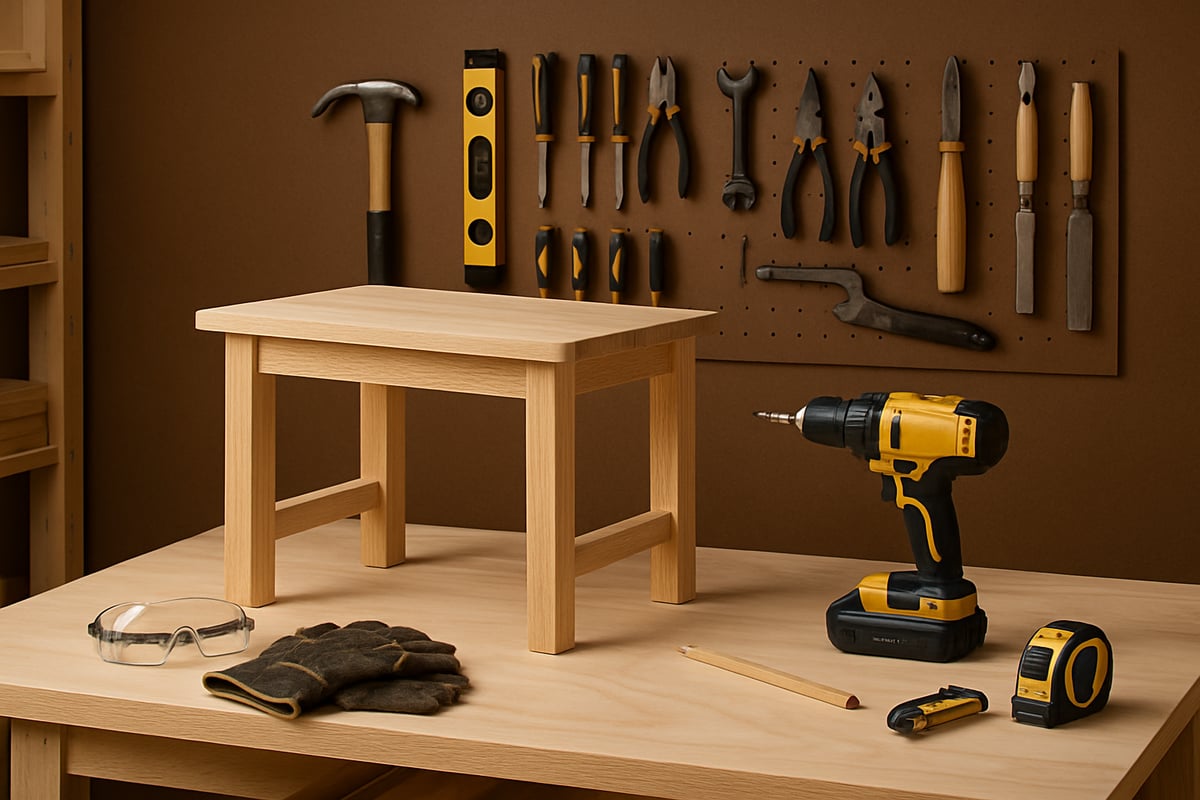
Preparing Your Workspace
Before building your own furniture, start by organizing your workspace for efficiency and safety. A clutter-free area promotes focus and reduces the risk of accidents. If space is limited, consider a foldable workbench or a portable tool caddy.
Proper lighting is essential for accurate measuring and cutting. Natural light is ideal, but supplement with adjustable task lamps if needed. Ensure good ventilation, especially when sanding or applying finishes, to maintain air quality.
Arrange tools and materials within arm’s reach. Wall-mounted racks, pegboards, or labeled bins help keep everything accessible. Compact setups, such as a rolling cart or wall storage, are perfect for apartments or small homes.
Safety should always come first. Keep safety gear, like goggles and gloves, nearby. A well-prepared workspace sets the foundation for building your own furniture with confidence and precision.
Measuring, Cutting, and Shaping Materials
Accurate measurements are vital in building your own furniture. Always double-check dimensions before making any cuts. Use a steel tape measure and a reliable square to mark straight lines. Marking tools like pencils or chalk ensure clear, visible guidelines.
When cutting, choose the right saw for your material. Hand saws offer control for small cuts, while circular or jigsaws handle larger sections. Use clamps or a miter box to keep pieces stable and straight during cutting.
Templates and guides help standardize repetitive shapes. For beginners, printable templates can reduce errors and waste. If you miscut, don't worry—small adjustments or filler pieces can often resolve the issue.
Common mistakes include measuring from the wrong edge or using a dull blade. To avoid these, establish a routine: measure twice, cut once. For those eager to refine their skills, DIY furniture building courses provide step-by-step video instruction and hands-on practice, enhancing your confidence when building your own furniture.
Assembly Techniques: Joinery and Fastening
With materials shaped, the next step in building your own furniture is assembly. Joinery techniques like dowels, mortise and tenon, and pocket holes each offer unique strengths. Dowels are user-friendly and perfect for aligning parts. Mortise and tenon joints provide classic strength for tables and chairs. Pocket holes are ideal for hidden, sturdy connections.
Decide when to glue, screw, or nail. Wood glue creates strong, invisible bonds, while screws and nails add mechanical strength. For a basic table frame, start by laying out all parts, then dry-fit pieces to check alignment. Apply glue to joints, clamp together, and secure with screws if needed.
Modern joinery tools, such as dowel jigs or pocket-hole systems, simplify the process and increase accuracy. Always check for square corners and tight joints as you assemble. Building your own furniture becomes easier as you master these essential techniques, ensuring your finished piece is both stable and stylish.
Sanding, Smoothing, and Prepping for Finish
Sanding is a critical step in building your own furniture, giving surfaces a professional, smooth feel. Begin with a coarse grit sandpaper (80-100) to remove rough spots, then progress to finer grits (150-220) for a silky finish. Sand along the wood grain to avoid scratches.
Fill any gaps or imperfections with wood filler, then sand again once dry. Pay extra attention to edges and corners—they should feel as smooth as the main surfaces. Use a tack cloth or a damp rag to remove all dust before finishing.
Proper preparation ensures that stains and paints adhere evenly. With careful sanding, your piece will look and feel expertly crafted, a testament to your dedication in building your own furniture.
Applying Finishes: Paints, Stains, and Sealants
Choosing the right finish is essential in building your own furniture for both durability and appearance. Water-based finishes dry quickly and are low-odor, making them suitable for indoor projects. Oil-based finishes penetrate deeply, enhancing the wood’s natural grain but require longer drying times.
To stain a wood surface, apply the stain evenly with a brush or cloth, following the grain. Wipe away excess after a few minutes. Once dry, seal with a clear polyurethane or wax for protection. Paints offer a broader color palette and can hide imperfections, while stains highlight the natural beauty of the wood.
Tips for success:
- Test finishes on a scrap piece first
- Apply thin, even coats
- Lightly sand between coats for smoothness
Avoid common pitfalls like drips or uneven coverage by working in good lighting and using quality brushes. Building your own furniture with the right finish ensures your creation will last and look beautiful for years.
Final Assembly and Quality Checks
The final stage of building your own furniture is assembling all components and ensuring everything fits perfectly. Carefully follow your plans, tightening fasteners and aligning parts as you go. Check for wobbles by gently rocking the piece on a flat surface.
Inspect for gaps or misalignments, adjusting as needed. If you find minor issues, simple fixes like tightening screws or adding shims can resolve most problems. Use a level to confirm surfaces are even.
Before declaring your project complete, review all joints, hardware, and finishes. A thorough quality check guarantees your furniture is sturdy, safe, and ready for daily use. The satisfaction of building your own furniture is unmatched when you see your custom piece come together flawlessly.
Troubleshooting and Common Mistakes
Troubleshooting is a crucial part of building your own furniture. Even experienced DIYers encounter mistakes, but with the right approach, you can turn challenges into learning opportunities and achieve a polished final result.
Identifying and Fixing Common Errors
When building your own furniture, common errors include misaligned joints, uneven surfaces, and loose fittings. These issues can often be spotted early by carefully inspecting each step as you go.
- Always double-check measurements before cutting.
- Use a square to confirm right angles during assembly.
- If a board splits, apply wood glue and clamp it until dry.
A frequent mistake is rushing the assembly, leading to gaps or instability. Take your time to correct minor misalignments before moving on. Remember, patience and attention to detail are key in building your own furniture.
Ensuring Structural Integrity and Safety
Ensuring the safety and stability of your project is essential when building your own furniture. Pay close attention to weight limits, especially for items like bookshelves or benches.
- Reinforce stress points with brackets or extra screws.
- Test joints for wobble before final assembly.
- Distribute weight evenly across the structure.
According to the DIY Safety Survey 2024, 22 percent of first-time builders report structural issues. By proactively reinforcing weak spots, you can prevent future problems and create furniture that lasts.
Finishing Touches for a Professional Look
Finishing makes a dramatic difference when building your own furniture. Small details like edge sanding and hardware upgrades elevate the final result.
- Use fine-grit sandpaper for smooth edges.
- Apply touch-up pens to cover minor scratches.
- Swap basic handles for custom knobs to add personality.
For example, upgrading the handles on a cabinet can transform a basic piece into a standout feature. These finishing touches ensure your furniture looks and feels professionally made.
When to Seek Help or Professional Advice
Sometimes, building your own furniture presents challenges beyond your current skills, especially with complex joinery or structural adjustments. Recognizing these moments is vital for both safety and success.
- Reach out to online forums or local workshops for guidance.
- Consider custom design support services if you need help adapting plans or creating unique pieces.
- Consult professionals for advanced joinery or load-bearing projects.
Seeking help is a smart step on your DIY journey, ensuring that building your own furniture remains enjoyable and rewarding, even when obstacles arise.
Upgrading Your Skills and Finding Inspiration
The journey of building your own furniture does not end with your first project. As you gain confidence, exploring advanced techniques and drawing inspiration from new sources can elevate both your skills and the quality of your creations. With the DIY furniture market expanding rapidly, keeping pace with innovations and community trends is essential for anyone committed to personal growth in this rewarding field.
Learning Advanced Techniques and Trends
As you continue building your own furniture, consider exploring advanced woodworking methods such as CNC routing, laser cutting, or modular joinery. These techniques allow for more precise and creative designs, helping you stay at the forefront of furniture trends in 2025. Incorporating features like hidden storage or wireless charging can transform simple pieces into innovative statements.
Staying aware of industry trends is easier than ever. According to DIY Furniture Market Growth Statistics, the global DIY furniture market is experiencing significant growth, driven by consumer demand for customization and smart technology integration. Embracing these trends ensures your projects remain both functional and stylish.
Leveraging Online Resources and Communities
The internet is a powerful ally when building your own furniture. Forums, YouTube channels, and online courses offer step-by-step guidance, troubleshooting tips, and new design ideas. Engaging with online communities allows you to share progress, ask questions, and celebrate achievements with fellow DIYers.
A recent report found that 70% of DIYers rely on digital tutorials for project support. Bookmark your favorite creators, participate in community challenges, and use digital libraries to expand your knowledge. These resources help you refine your techniques and broaden your creative horizons.
Craft'n Build Design Co.: Empowering DIY Furniture Builders
Craft’n Build Design Co. is an invaluable resource for anyone passionate about building your own furniture. Their platform offers CAD design resources and a library of pre-designed models, making it easy to get started or experiment with custom ideas.
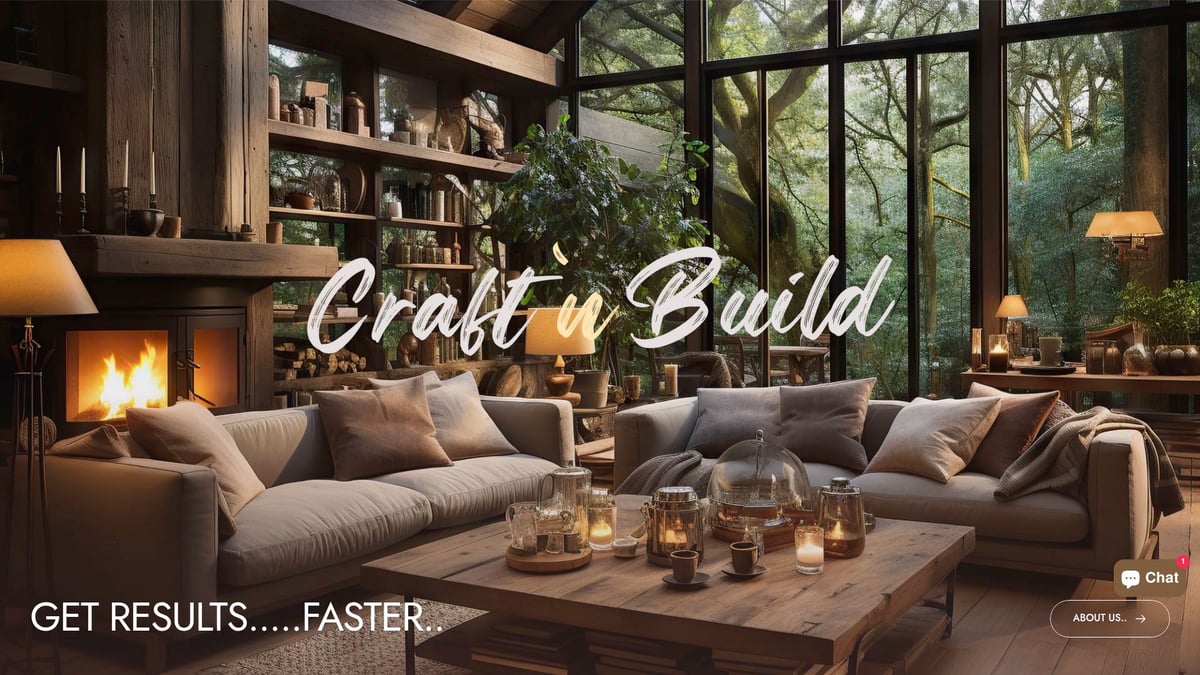
Self-paced online courses guide you through every stage, from design to assembly. Craft’n Build’s global community provides inspiration, expert advice, and sourcing support for unique projects. Whether you are a beginner or looking to master new skills, their tools and network empower you to achieve professional results.
Joining Local Workshops and Maker Spaces
Building your own furniture can also be a social experience. Local workshops and maker spaces provide hands-on learning, access to specialized equipment, and opportunities to connect with experienced mentors. These environments foster creativity and encourage collaboration.
Many DIY enthusiasts credit their skill advancement to in-person workshops. Success stories often begin with a single class, leading to lifelong friendships and ongoing projects. Seek out local events or maker spaces to further develop your abilities and find lasting inspiration.
You’ve explored the essentials of planning, designing, and building your own furniture, and now it’s time to bring your ideas to life. If you’re eager to take your next step with confidence, having access to professional resources can make all the difference. With Craft’n Build Design Co.’s vast library of pre-made 3D CAD models, you can jumpstart your furniture projects, visualize your designs, and gain valuable skills at your own pace. Whether you’re a beginner or looking to refine your expertise, you’ll find the tools and support you need to create truly unique pieces.
Learn how to create furniture designs with premade 3D cad

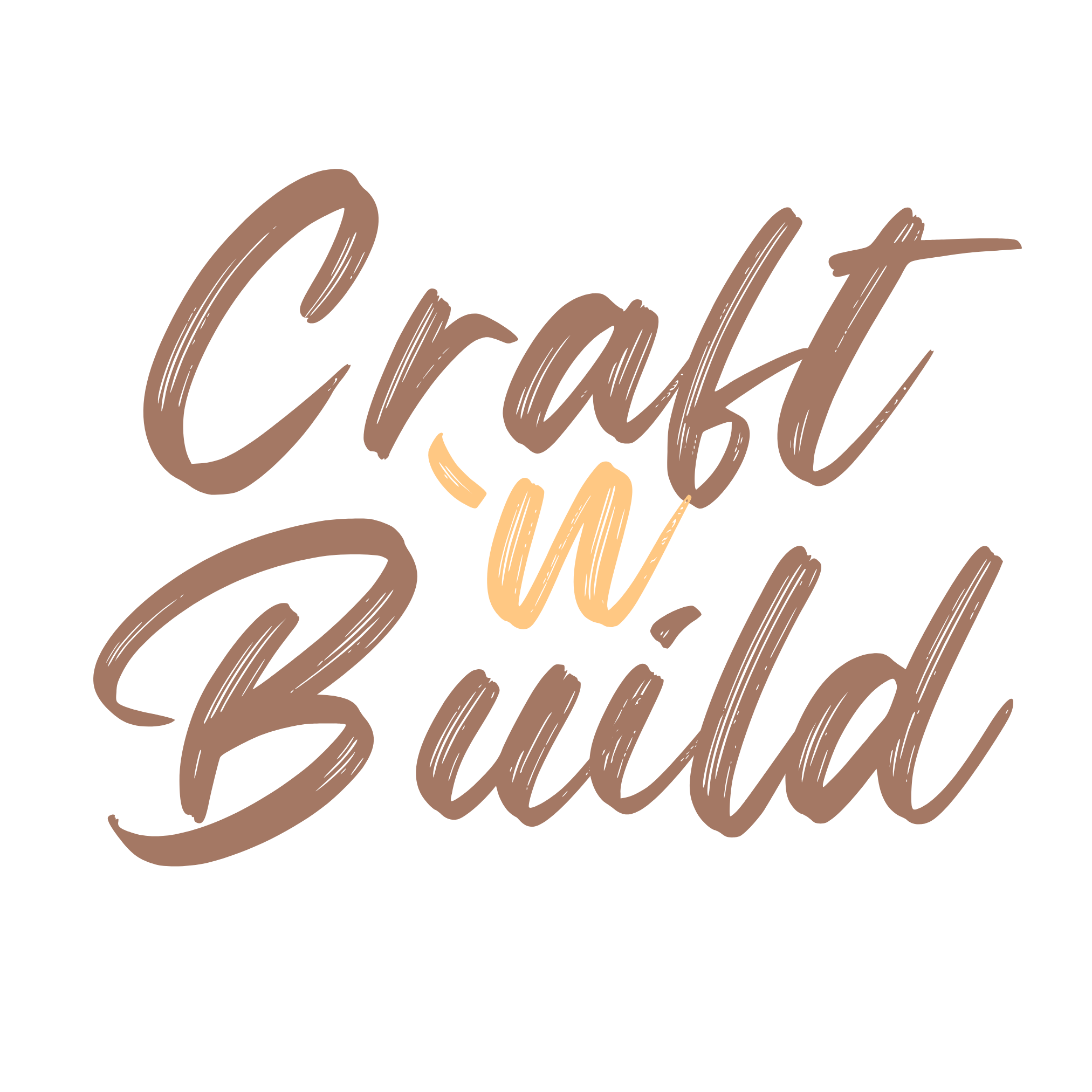





Share:
9 Essential Interior Design Styles - Ideas for 2025
Earthy Modern Interior Design Guide for Inspired Spaces 2025